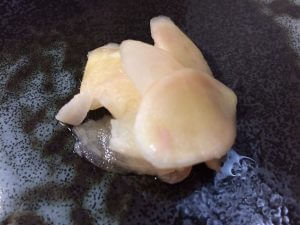Why do people risk their lives to eat Fugu, a fish known to be deadly?
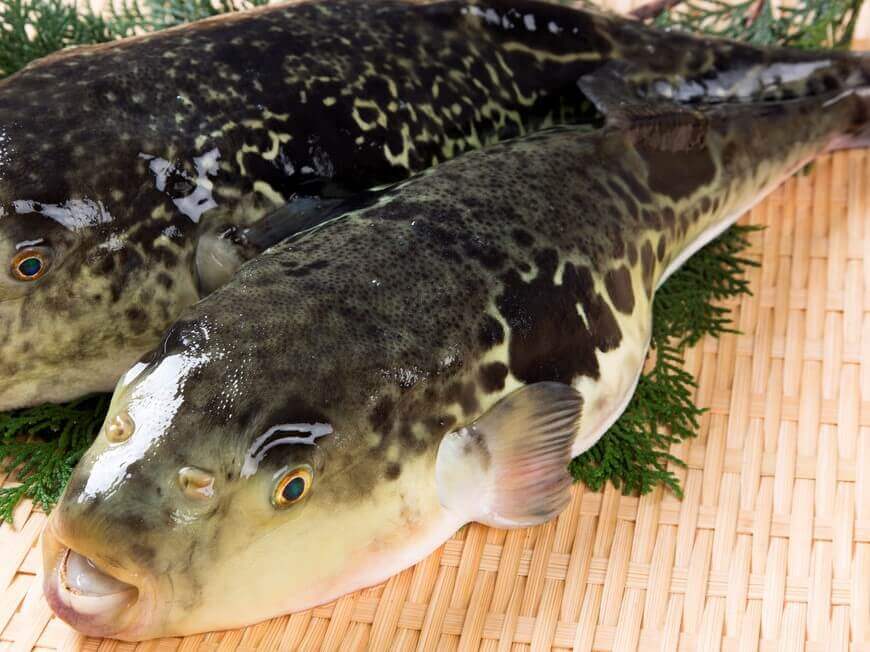 Fugu, or blowfish, is a celebrated delicacy in Japanese cuisine, but it comes with a deadly risk. Despite its exquisite taste and refined culinary presentation, Fugu contains one of the most powerful natural toxins known to humans. Understanding what makes this fish so dangerous—and how it’s safely prepared—sheds light on one of the most fascinating aspects of Japanese food culture.
Fugu, or blowfish, is a celebrated delicacy in Japanese cuisine, but it comes with a deadly risk. Despite its exquisite taste and refined culinary presentation, Fugu contains one of the most powerful natural toxins known to humans. Understanding what makes this fish so dangerous—and how it’s safely prepared—sheds light on one of the most fascinating aspects of Japanese food culture.
In most cases, Fugu (blowfish) poison is found in non-meat parts of the fish such as the liver, ovaries, stomach, intestine, skin and eyes. There are Fugu that do not contain poison in these parts, but most of the Fugu in the waters near Japan are poisonous. A mistake in preparations that allows the meat to touch the poison of the liver or ovaries results in immediate death. Therefore, the general rule is to only eat Fugu at restaurants with an expert licensed in Fugu preparation. Cases of poisoning by Fugu are nearly always a result of an amateur trying to prepare the fish.
The toxin in Fugu is a chemical substance called tetrodotoxin and even heat from boiling or frying can’t detoxicate it. Even Torafugu (Japanese pufferfish) that we find so delicious (we eat the meat, skin and testes) has poison in the liver, ovaries and intestines. The toxicity is said to be at least 1,000 times that of potassium cyanide. They say 10 people would die from the organs of a single Torafugu. In the case of Fugu poisoning, the first poisoning symptoms occur between 20 minutes and three hours after eating the Fugu. It starts with numbness in the lips, the tip of the tongue and fingertips. This is followed by headache, stomachache and severe vomiting. The victim will stagger when trying to walk. Soon they will experience sensory paralysis, speech disturbance and difficulty breathing, accompanied by a decrease in blood pressure. After that, the entire body becomes paralyzed and the victim can no longer move even a finger. Finally, they will fade out of consciousness and eventually both breathing and heartbeat cease, resulting in death. If the consumer doesn’t notice they are experiencing poisoning symptoms, they will surely die.
The strength of the toxin of the fugu also varies depending on the season. Even on an individual basis, some fish have toxins while others don’t. It’s not possible to determine this based on appearance, so it’s better to never eat the organs and eyes, which have a high probability of containing poison.
Fugu has already been successfully farmed and is on the market. No toxins have been found in this farmed Fugu. If farmed Fugu has no toxins, it’s only natural to question what factors generate toxins in wild Fugu and apparently it‘s a cumulative effect of toxins from the food chain. Fugu’s main sources of nutrition are starfish and shellfish. Starfish and shellfish accumulate poison in the body by eating zooplankton with vibrio attached to them. This vibrio creates poisons. Then, Fugu accumulates toxins in the body by eating starfish and shellfish that have toxins accumulated in their bodies. Therefore, farmed Fugu are raised on man-made feed that doesn’t contain Fugu toxins, and since they don’t ingest Fugu toxins and there is no bioconcentration, so the Fugu does not contain poison.
Enjoying Fugu safely requires more than bravery—it requires expertise.
While the thought of eating a potentially lethal fish may seem reckless, the strict regulations and skilled craftsmanship behind Fugu preparation make it one of the safest delicacies when handled properly. As farmed Fugu becomes more common and toxin-free, the dangers may be diminishing—but the mystique surrounding this unique fish remains as strong as ever.
[sc_apply url=”https://sushiuniversity.jp/apply/”]
We hope this information will be helpful.

Revision date: August 7, 2025
Share this article
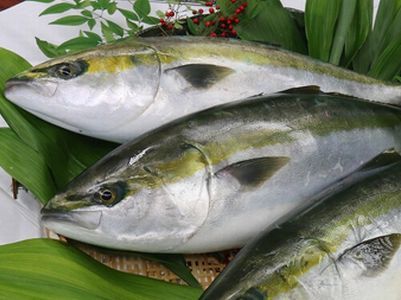 A good representative fish of shusseuo is the
A good representative fish of shusseuo is the 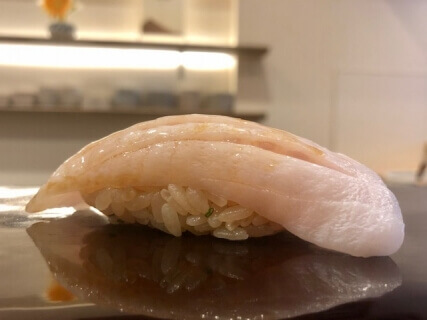
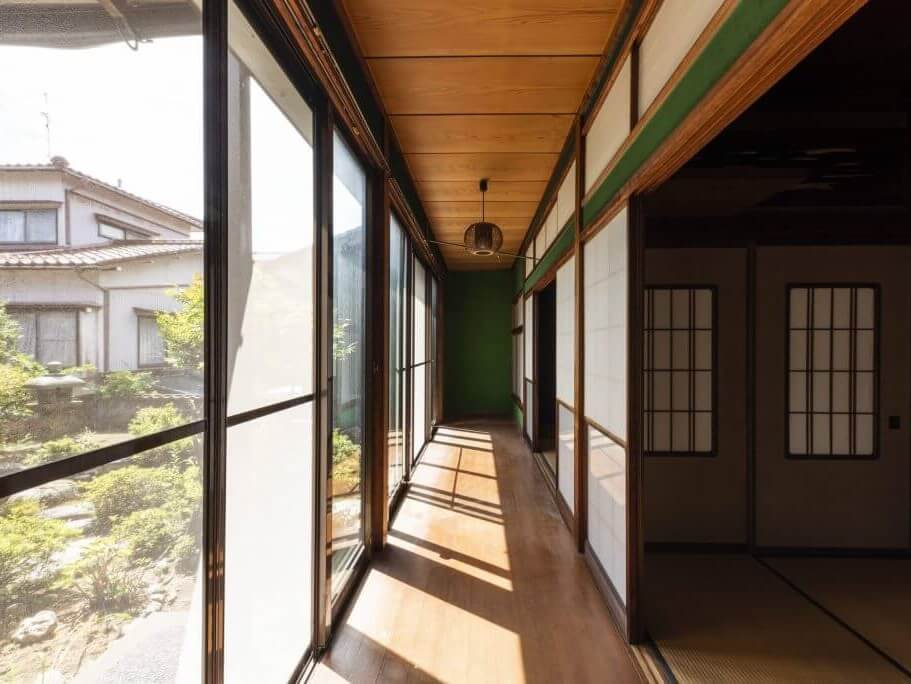 The name “engawa” comes from its resemblance to the unique veranda structure of Japanese-style homes. This veranda is called “engawa” in Japanese.
The name “engawa” comes from its resemblance to the unique veranda structure of Japanese-style homes. This veranda is called “engawa” in Japanese.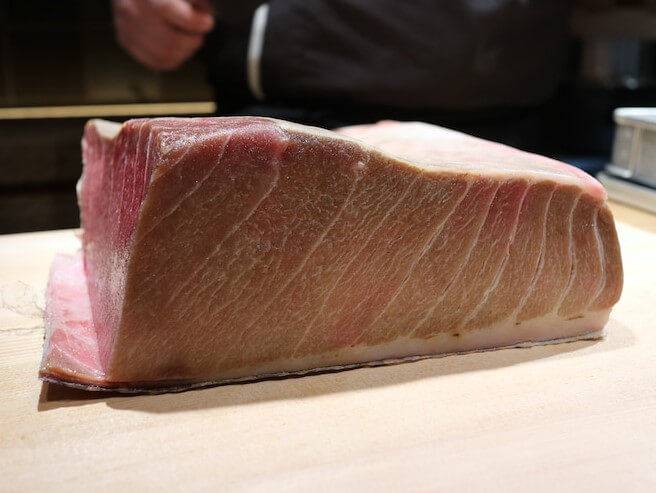
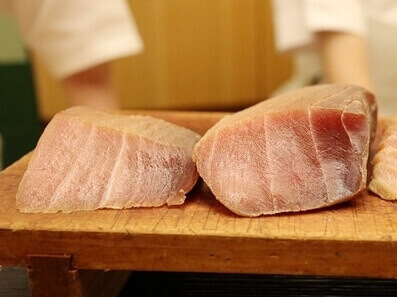 In order to mature seafood, after completing advance preparations (removing the head and internal organs then washing thoroughly; all blood must be removed), more than adequate considerations must be made for the fat content of the fish and management of the bodily fluids. Specifically, this includes processes like dry-aging at a low temperature, removing moisture using salt, utilizing enzymes and fermentation, wet aging by putting the item in a vacuum pack, and wrapping in aging sheets, which were developed thanks to
In order to mature seafood, after completing advance preparations (removing the head and internal organs then washing thoroughly; all blood must be removed), more than adequate considerations must be made for the fat content of the fish and management of the bodily fluids. Specifically, this includes processes like dry-aging at a low temperature, removing moisture using salt, utilizing enzymes and fermentation, wet aging by putting the item in a vacuum pack, and wrapping in aging sheets, which were developed thanks to 
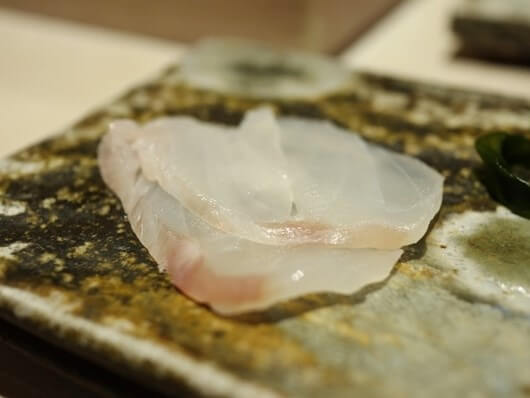
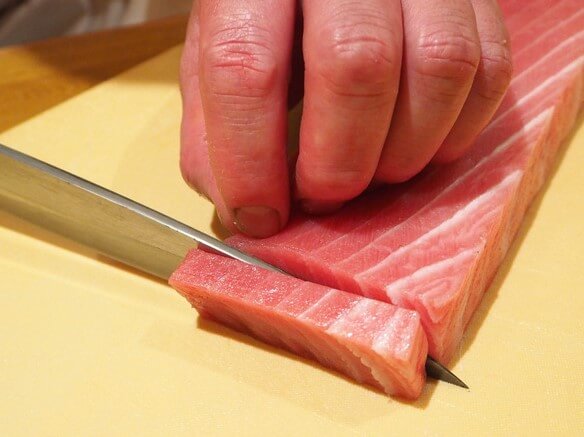
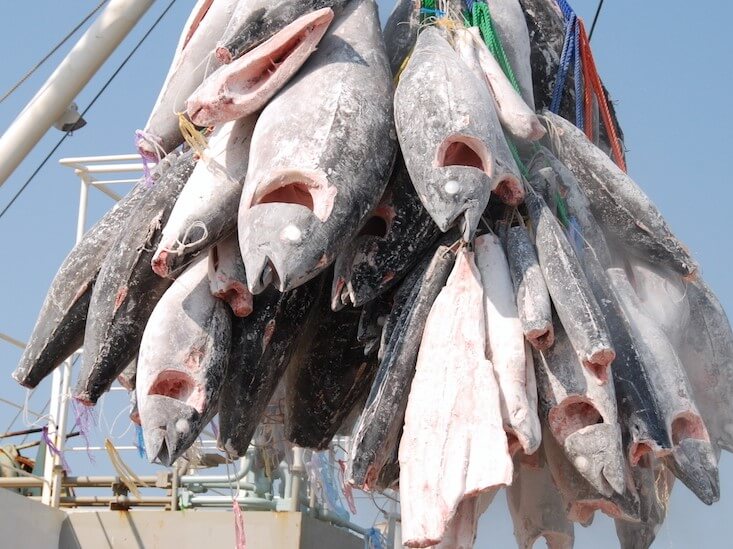 Once tuna caught in the open sea is processed by draining its blood on the ship, it is flash-frozen at ultra-low temperatures (-60℃). Ultra-low temperatures stops the enzymatic hydrolosis of protein, oxidation of fat and cultivation of microorganisms so it can be stored over a long period of time. The process can prevent discoloration for over two years and maintain a freshness worthy of being served as sashimi. Therefore, skillful sushi restaurants mature the thawed tuna in the refrigerator for about one week to attain the perfect balance of umami and change in color.
Once tuna caught in the open sea is processed by draining its blood on the ship, it is flash-frozen at ultra-low temperatures (-60℃). Ultra-low temperatures stops the enzymatic hydrolosis of protein, oxidation of fat and cultivation of microorganisms so it can be stored over a long period of time. The process can prevent discoloration for over two years and maintain a freshness worthy of being served as sashimi. Therefore, skillful sushi restaurants mature the thawed tuna in the refrigerator for about one week to attain the perfect balance of umami and change in color. In the United States and other countries, “
In the United States and other countries, “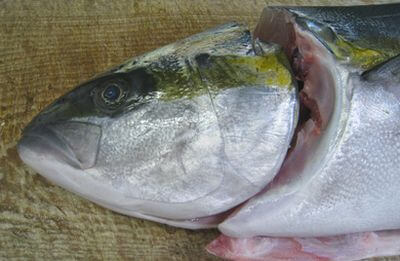 As an aside, three cousins (closely related species) of buri are often used as sushi toppings in sushi restaurants. In the Fish Name Dictionary, the translations of these cousins are Goldstriped amberjack (
As an aside, three cousins (closely related species) of buri are often used as sushi toppings in sushi restaurants. In the Fish Name Dictionary, the translations of these cousins are Goldstriped amberjack (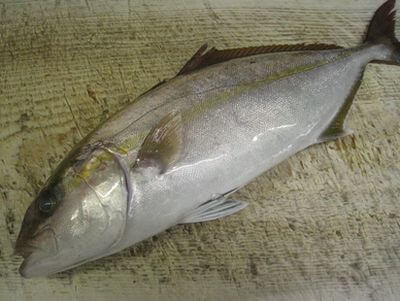 I’m sure you’re interested in the price, and while the price of the seasonal winter buri varies, it is generally around $10-20 per kilogram. Since there is very little distribution of hiramasa, the price is said to be about double that of buri. The price of
I’m sure you’re interested in the price, and while the price of the seasonal winter buri varies, it is generally around $10-20 per kilogram. Since there is very little distribution of hiramasa, the price is said to be about double that of buri. The price of 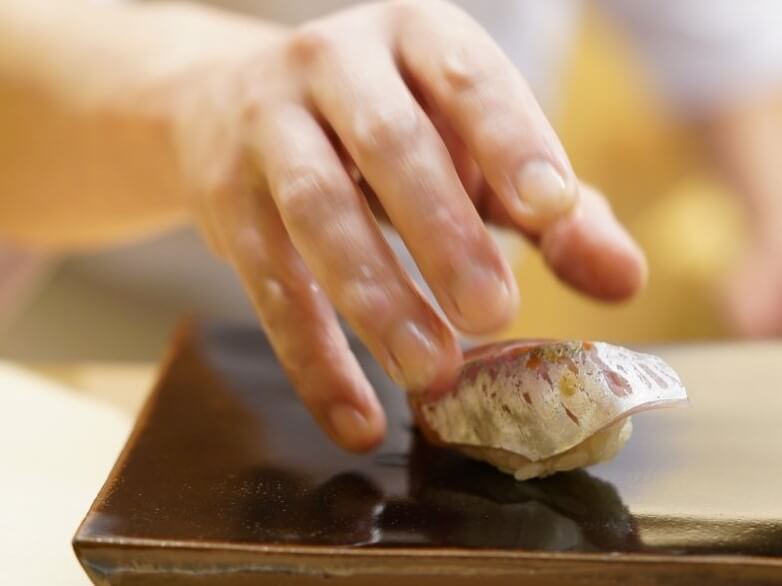 Even Japanese people can be overwhelmed by the somehow special atmosphere when they sit down at the sushi counter. This continues even when starting to eat. Other customers are concentrating on eating, quietly. You kind of get the feeling that if you utter anything, you will be asked to leave. If you don’t end up mustering up the courage, you just end up paying the high price for your meal and going home without much more to say of the evening.
Even Japanese people can be overwhelmed by the somehow special atmosphere when they sit down at the sushi counter. This continues even when starting to eat. Other customers are concentrating on eating, quietly. You kind of get the feeling that if you utter anything, you will be asked to leave. If you don’t end up mustering up the courage, you just end up paying the high price for your meal and going home without much more to say of the evening.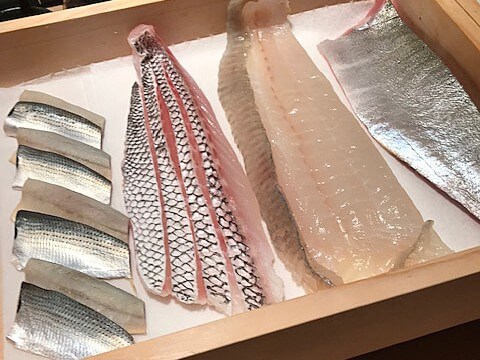 The customer ends up not remembering which fish they ate. For example there are very few people who can name the order of the 15-piece Omakase course they ate. You may be sure you ate tuna. But where was it caught? Was it the belly side or the back side? How long had the fish been matured? To be a bit more frank, how much did it cost? If you ask the chef these questions, next time you visit, you’ll be able to compare different taste based on the fishing location. Knowing the difference in taste based on the part of the fish, and difference in flavor depending on where it was procured, and different taste depending on the preparations will certainly improve your sushi literacy remarkably. It will also lead to a better awareness of your own taste preferences.
The customer ends up not remembering which fish they ate. For example there are very few people who can name the order of the 15-piece Omakase course they ate. You may be sure you ate tuna. But where was it caught? Was it the belly side or the back side? How long had the fish been matured? To be a bit more frank, how much did it cost? If you ask the chef these questions, next time you visit, you’ll be able to compare different taste based on the fishing location. Knowing the difference in taste based on the part of the fish, and difference in flavor depending on where it was procured, and different taste depending on the preparations will certainly improve your sushi literacy remarkably. It will also lead to a better awareness of your own taste preferences.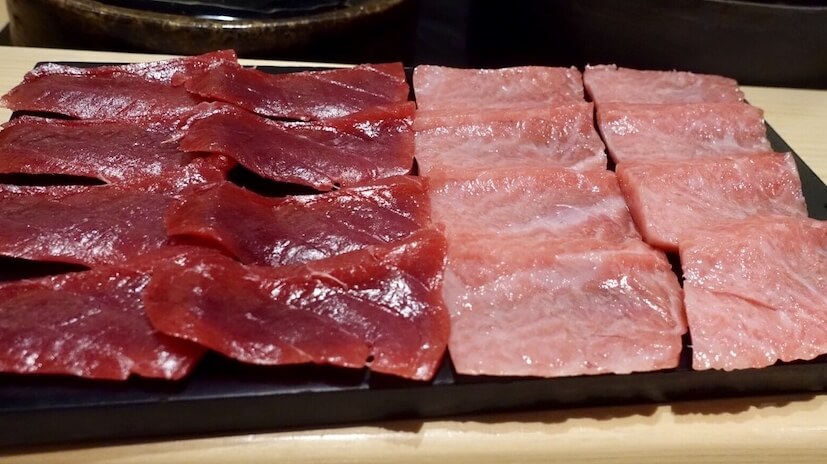 However, sushi chefs will remove the topping from the refrigerator and leave it standing out for a while (in the case of tuna, the fat will melt at around 23℃). They do this because if the topping is cold, it becomes difficult to taste the essential nature of the fish. The temperature of the shari is best at human skin temperature (around 36℃) to maximize the taste and sweetness of the rice. However, the ideal temperature differs very slightly depending on the topping.
However, sushi chefs will remove the topping from the refrigerator and leave it standing out for a while (in the case of tuna, the fat will melt at around 23℃). They do this because if the topping is cold, it becomes difficult to taste the essential nature of the fish. The temperature of the shari is best at human skin temperature (around 36℃) to maximize the taste and sweetness of the rice. However, the ideal temperature differs very slightly depending on the topping.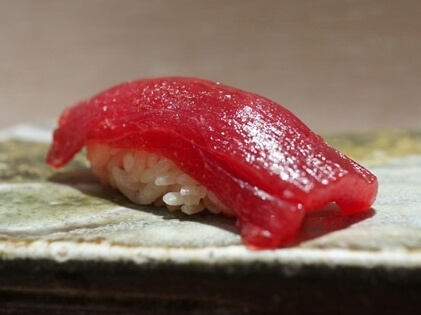 Tuna at top-end restaurants is light in flavor. Its Akami (red meat) has an indescribable acidity with a delicate harmony between the shari vinegar, the nikiri soy sauce, and wasabi. However, on the other side of the coin, it feels almost like a waste to eat it without a sense of luxury. Of course tuna with delicious akami, also has delicious fatty tuna (toro). And you’ll never get tired of it. It would be easy to polish off 10 pieces as a light snack. Contrary to popular belief, it’s not the high fat content that makes it so easy to eat. However, it is because of that popular belief that many people feel that the big chain store
Tuna at top-end restaurants is light in flavor. Its Akami (red meat) has an indescribable acidity with a delicate harmony between the shari vinegar, the nikiri soy sauce, and wasabi. However, on the other side of the coin, it feels almost like a waste to eat it without a sense of luxury. Of course tuna with delicious akami, also has delicious fatty tuna (toro). And you’ll never get tired of it. It would be easy to polish off 10 pieces as a light snack. Contrary to popular belief, it’s not the high fat content that makes it so easy to eat. However, it is because of that popular belief that many people feel that the big chain store 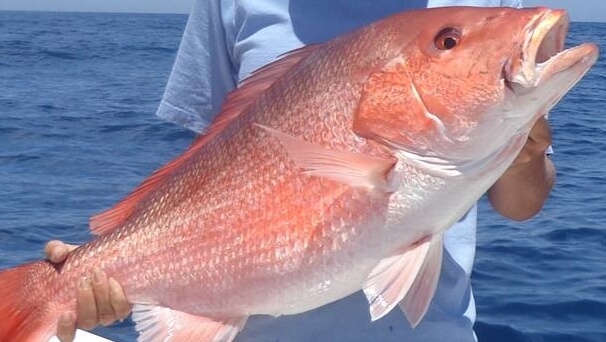 Biologically, Snapper is a generic term for all species in the snapper family (
Biologically, Snapper is a generic term for all species in the snapper family (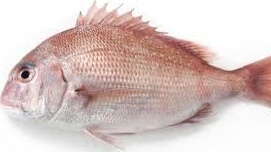 They say there are over 300 different species of fish with “Tai” in the name, making up 10% of Japan’s fish. When we say “Tai” in Japanese, we are referring to “madai” or red sea bream. Red sea-bream is categorized in the “madai” family (
They say there are over 300 different species of fish with “Tai” in the name, making up 10% of Japan’s fish. When we say “Tai” in Japanese, we are referring to “madai” or red sea bream. Red sea-bream is categorized in the “madai” family (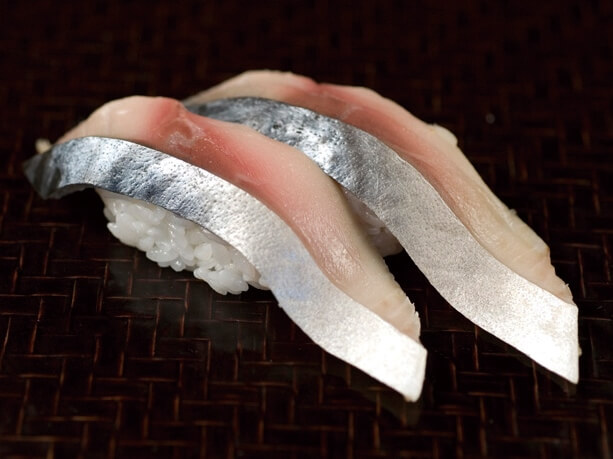 When you sit at the counter and order nigiri a la carte, they will come out in pairs.* There is nothing wrong with counting these in the regular Japanese way “ikko (一個),” “niko (二個).”
When you sit at the counter and order nigiri a la carte, they will come out in pairs.* There is nothing wrong with counting these in the regular Japanese way “ikko (一個),” “niko (二個).”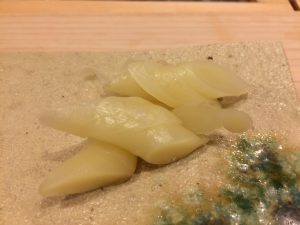 However, at high-end or traditional sushi restaurants where artisanal gari is made in-house, it may be included in the bill. This is because crafting delicious, high-quality gari requires considerable time, skill, and labor, and the cost of fresh, domestic ingredients can be so high that serving it for free would result in a financial loss.
However, at high-end or traditional sushi restaurants where artisanal gari is made in-house, it may be included in the bill. This is because crafting delicious, high-quality gari requires considerable time, skill, and labor, and the cost of fresh, domestic ingredients can be so high that serving it for free would result in a financial loss.